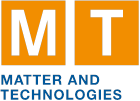Speaker
Description
Standard atomic physics models in PIC simulation either neglect excited states, predict atomic state population in post processing only, or assume quasi-thermal plasma conditions.
This is no longer sufficient for high-intensity short-pulse laser generated plasmas, due to their non-equilibrium, transient and non-thermal plasma conditions, which are now becoming accessible in XFEL experiments at HIBEF (EuropeanXFEL), SACLA (Japan) or at MEC (LCLS/SLAC).
To remedy this, we have developed a new extension for our PIC simulation framework PIConGPU to allow us to model atomic population kinetics in-situ in PIC-Simulations, in transient plasmas and without assuming any temperatures.
This extension is based on a reduced atomic state model, which is directly coupled to the existing PIC-simulation and for which the atomic rate equation is solved explicitly in time, depending on local interaction spectra and with feedback to the host simulation.
This allows us to model de-/excitation and ionization of ions in transient plasma conditions, as typically encountered in laser accelerator plasmas.
This new approach to atomic physics modeling will be very useful in plasma emission prediction, plasma condition probing with XFELs and better understanding of isochoric heating processes, since all of these rely on an accurate prediction of atomic state populations inside transient plasmas.
| Speed Talks | Normal |
|---|

